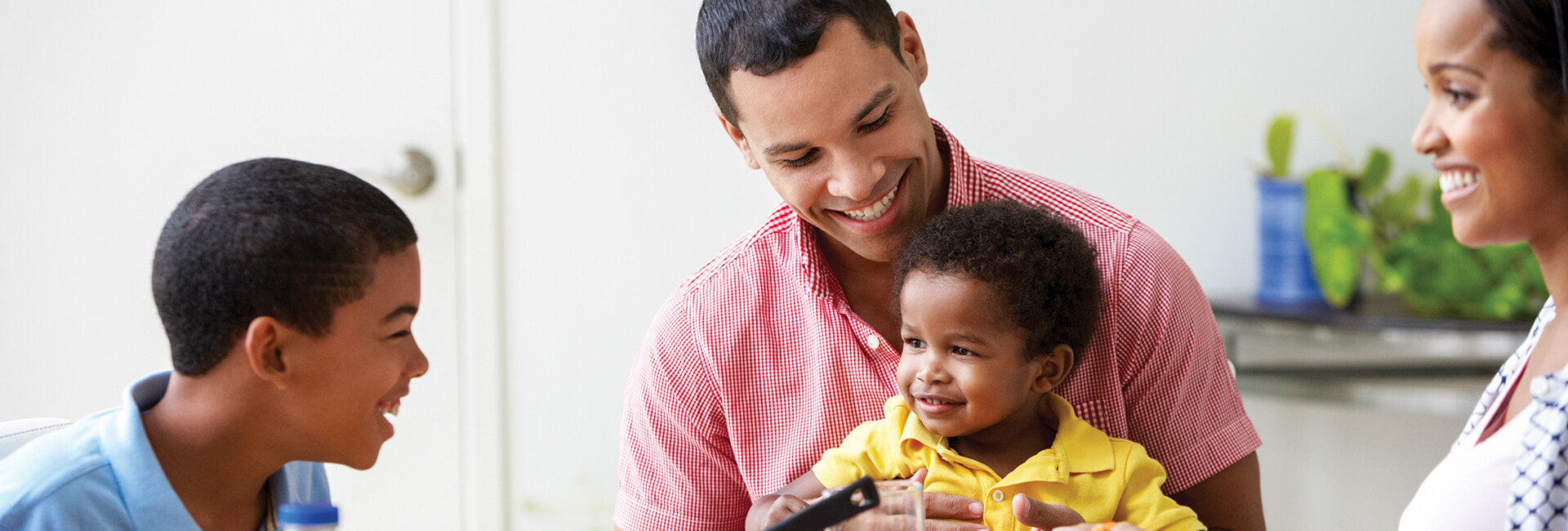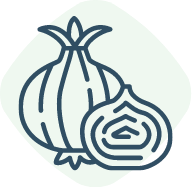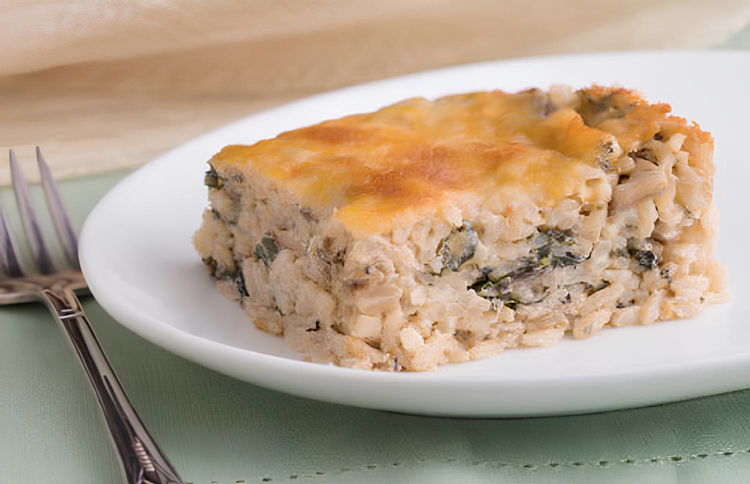
Cheesy Veggie & Rice Casserole
- Home
- Live Well Blog
- Cheesy Veggie & Rice Casserole
This Cheesy Veggie & Rice Casserole is a delicious, comforting dish packed with nutrients.
With hearty ingredients like kale, mushrooms, onions, and brown rice, this casserole delivers a good dose of fiber, vitamins, and minerals. Kale and mushrooms provide antioxidants and support immune health, while brown rice adds whole-grain goodness for steady energy. Topped with melty cheese, this recipe is sure to be a hit with kids and grown-ups alike, making it a perfect choice for a balanced, veggie-packed meal.



Preparation Time:
30 minutes
Cooking Time:
60 minutes
Servings:
6
Ingredients:
- 2 cups Low-sodium chicken broth
- 1 cup Brown rice, uncooked, long- grain, regular, dry
- 1 Tbsp Margarine
- ¾ cup Fresh onions, diced
- 3 cups Fresh mushrooms, sliced
- 1 tsp Garlic, minced
- ¼ tsp Salt
- ¼ tsp Ground black pepper
- ¼ tsp Onion powder
- 1 Tbsp and 1 tsp Whole- wheat flour
- ¾ cup Low-fat (1%) milk
- 1 qt or 4 oz Fresh kale, finely chopped
- 1 cup Low-fat cheddar cheese, shredded
- ¾ cup Low-fat mozzarella cheese, low-moisture, part-skim, shredded

Directions:
- Preheat oven to 350 °F (for convection oven: 325 °F).
- Pour chicken broth in a medium saucepan and bring to a boil.
- Place brown rice in a small baking dish (8” x 8” x 2”).
- Pour boiling broth over brown rice. Stir. Cover baking dish tightly.
- Bake in oven for 40 minutes.
- Remove cooked rice from oven. Set aside.
- Make the mushroom sauce: in a medium non-stick saucepan, add margarine, onions, mushrooms, minced garlic, salt, pepper, and onion powder. Stir constantly over medium-high heat until mushrooms are soft, about 3 minutes.
- Sprinkle flour over mushroom mixture. Stir well. After one minute, reduce to medium-low heat.
- Add milk, stirring constantly until smooth. Sauce will become creamy and thick in texture. Remove from heat and set aside.
- In a small bowl, combine cheese together and set aside.
- Lightly coat a baking dish (9” x 9”) with cooking spray, then assemble the casserole layers evenly into the baking dish as follows:

• First (bottom) layer: cooked rice

• Second layer: mushroom sauce

• Third layer: kale

• Fourth (top) layer: sprinkle with cheese mixture.
- Cover baking dish tightly.
- Bake again in the oven for 15-20 minutes (convection oven: 325 °F for 5-10 minutes).
- Remove from oven and allow to cool for a few minutes before cutting into 6 pieces.
- Serve, freeze, or refrigerate leftovers within 2 hours.
Nutrients Per Serving:
Calories 251
Protein 16 g
Carbohydrates 37 g
Dietary Fiber 4 g
Total Sugars 3 g
Total Fat 7 g
Saturated Fat 3 g
Cholesterol 8 mg
Sodium 401 mg
Vitamin A 196 mcg RAE
Vitamin C 10 mg
Vitamin D 27 IU
Calcium 266 mg
Iron 3 mg
Potassium 351 mg
REFERENCES:
Adapted from “Rice Vegetable Casserole” CACFP Home Childcare 6-Serving Recipe Project.
https://theicn.org/cnrb/recipes-for-centers/recipes-for-centers-main-dishes/rice-vegetable-casserole-usda-recipe-for-child-care-centers/